The Terramar Race Track
Friday, July 26, 2024
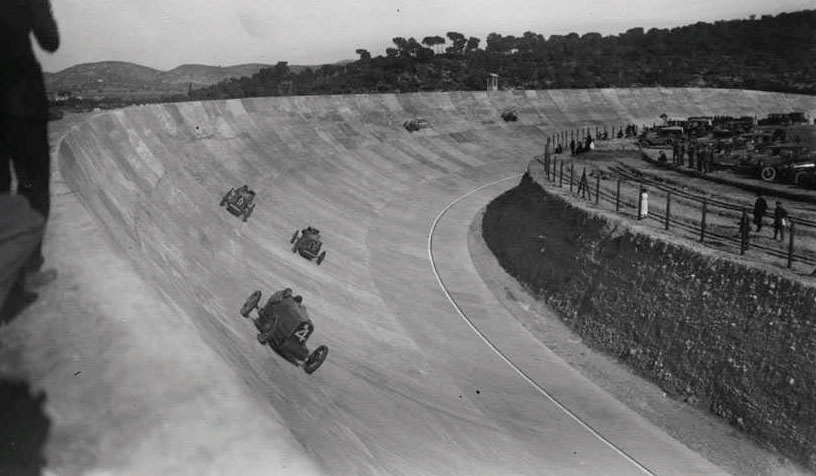
It is unknown to many, including car lovers. The circuit of Terramar is the third oldest in Europe after Brooklands and Monza, ahead even of the legendary Le Mans, and the first in Spain.
The Roaring Twenties were the last time the Terramar race track heard the roar of engines. It opened on the 28th of October 1923, but a failure to pay the construction workers for an unforeseen overrun in construction costs, led to them seizing the money that was taken at the gate, and left the organizers with no money to pay the drivers.
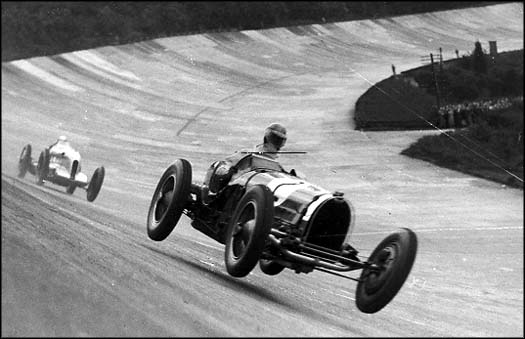 This disastrous inauguration, led to an immediate ban on the track hosting international events and while a few local automobile clubs held a few races here, they were unsuccessful, and the track was closed by 1925. This disastrous inauguration, led to an immediate ban on the track hosting international events and while a few local automobile clubs held a few races here, they were unsuccessful, and the track was closed by 1925.
The track has changed hands a few more times over the years, and despite a short-lived revival in the 1950s, it has long served as a chicken farm and a place to graze sheep.
The Autodrome has seen no structural intervention in the last 90 years but has held up incredibly well, a testament to the quality of its original construction. In fact, despite its degradation, Red Bull sponsored the circuit as a showpiece in 2012.
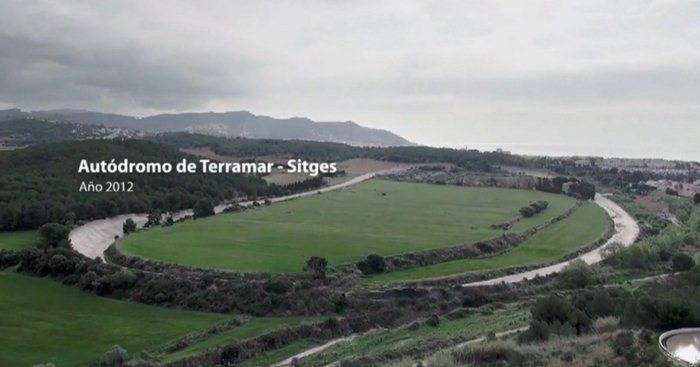
 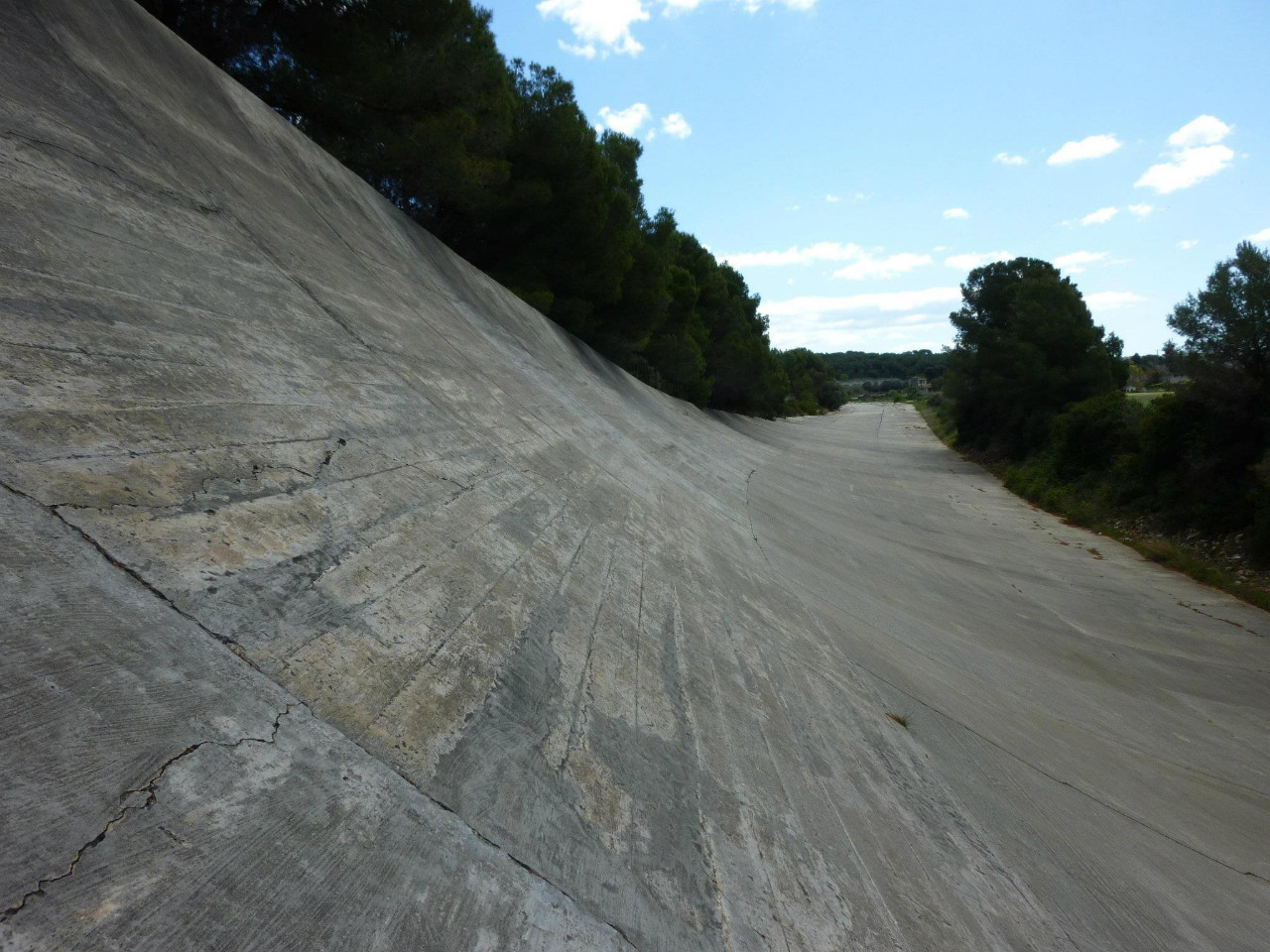
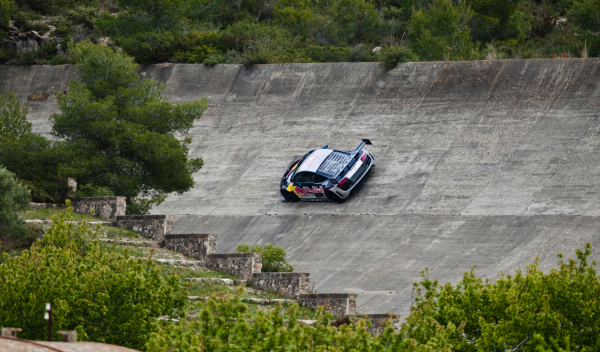
Today, the track can be viewed from the road, surrounding hills and footpaths. It’s overgrown, banking corners reminiscent of dams that have long since cracked and displaced their water. It is rumoured that the current owner is seeking funding to repair and reinstate the Autodrome, but only time will tell….
In this unique environment that still keeps the greatness, it once had, two of the best riders of the moment, Carlos Sainz and Miguel Molina, tested their skills as drivers. The challenge: to overcome the rigours of the old track at the wheel of one of the fastest cars of the time (Audi R8 LSM).
 1
Like
Published at 12:47 PM Comments (1)
1
Like
Published at 12:47 PM Comments (1)
Most Beautiful Historic City In Spain
Friday, July 19, 2024
The Lonely Planet, one of the publishers specialising in tourist guides, have carried out multiple surveys putting a total of 15 World Heritage Cities in Spain head to head to discover which is the most beautiful of them all. Do you agree with the winning choice?
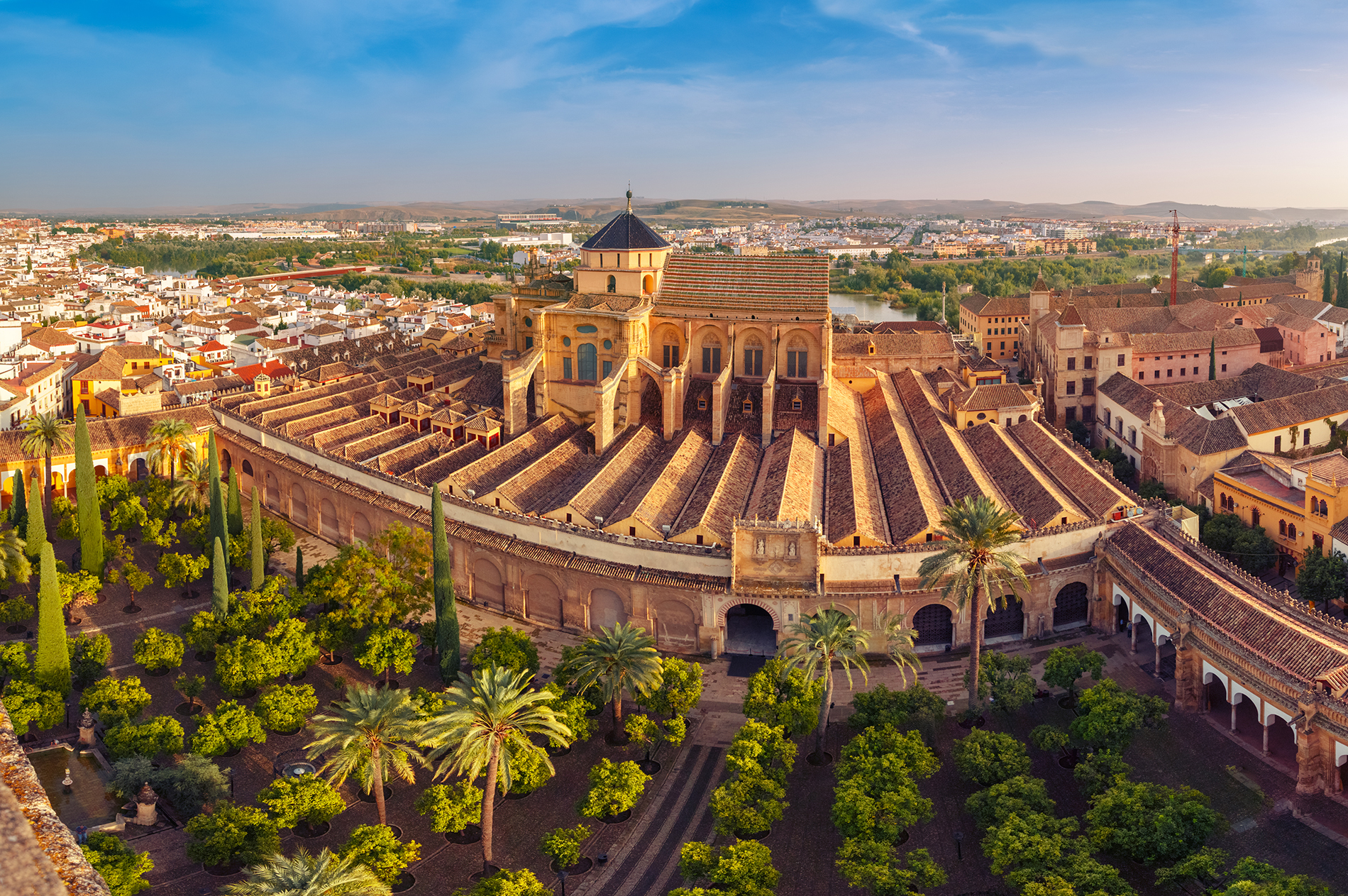
Santiago de Compostela, Tarragona, Ibiza, Cuenca, Baeza, Úbeda, Córdoba, Mérida, Cáceres, Toledo, Salamanca, Ávila, Alcalá de Henares, Segovia and San Cristóbal de la Laguna were the cities that participated in the surveys and the contest...
Although the decision was difficult given the architectural, cultural or historical level that all the aforementioned cities meet, in the end, it was Córdoba that won first place, beating Toledo, in second.
Córdoba is, without a doubt, one of the compulsory visits within the national territory. Its vast historic centre was declared a World Heritage Site by UNESCO in 1984, and it is no wonder. In it, buildings and monuments, both religious and civil, as well as sculptures, walls, temples, bridges and gardens form a perfect route that attracts thousands of tourists each year.
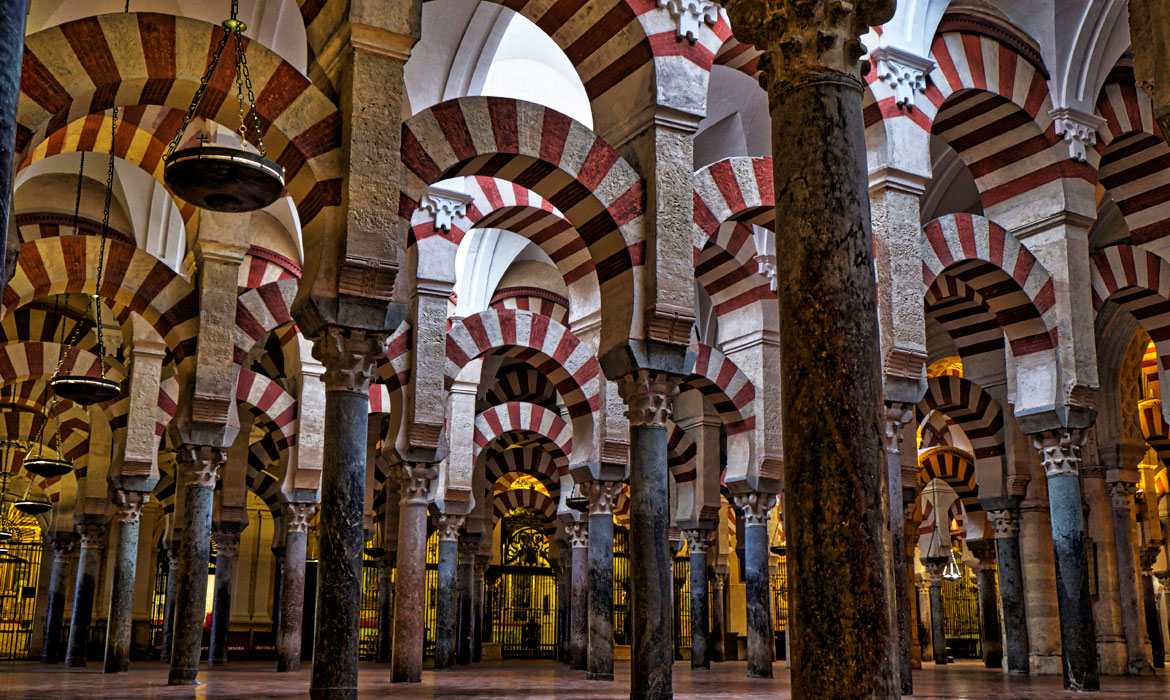
Within this city, the Mosque of Córdoba stands out, which, together with the Roman Bridge, constitutes the main symbol of this territory, one of the oldest in Europe. Therefore, the first obligatory visit is the Mosque-Cathedral of Córdoba itself, where you can contemplate the complete evolution of the Umayyad style in Spain, in addition to the Gothic, Renaissance and Baroque styles of Christian construction.
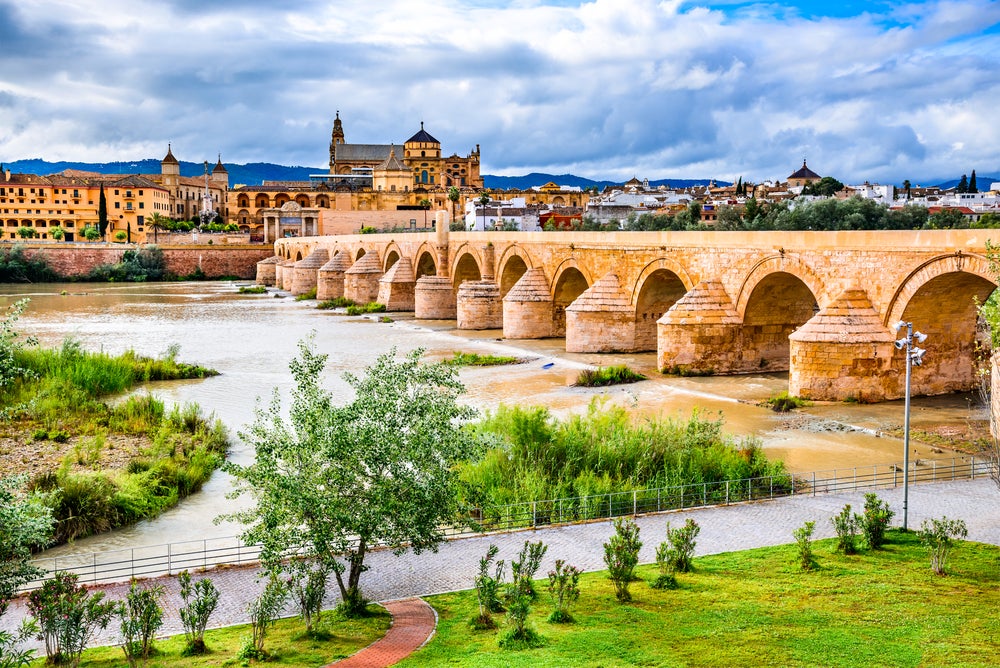
Together with this monument, both the river and the Puerta del Puente and the Roman Bridge of Córdoba itself, form a picture and a landscape that none of the visitors can miss. The bridge was built during the 1st century BC although several renovations have been carried out throughout history, the most recent being that of 1876.
After passing the Roman Bridge, the visitor comes across the Torre de la Calahorra in Córdoba, which used to control and defend the city. This tower has been mentioned in some Arab source on al-Andalus, and in numerous historical references from the Christian conquest to the present day. Its architecture does not leave anyone indifferent either.
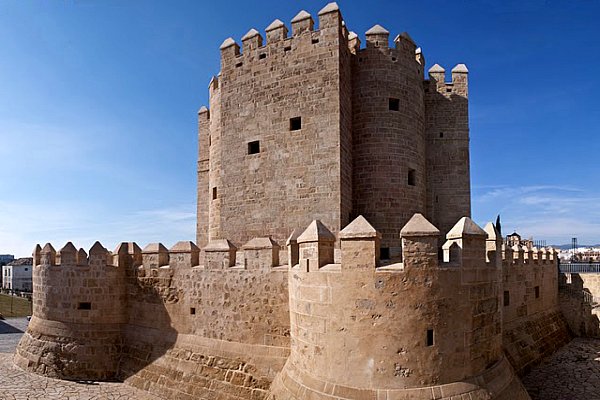
On the other hand, the Alcázar de Los Reyes Cristianos is another recommended visit. It is a fortress and palace, where Roman and Visigoth remains coexist with those of Arab origin. It was during the time of King Alfonso X the Wise when the restoration of this building began and was completed during the reign of Alfonso XI. In addition, we cannot forget the great beauty of its gardens.

Near Córdoba, Medina Azahara was declared a World Heritage Site by UNESCO in 2018. It is the city that Abd-al Rahman III had built on the slopes of Sierra Morena, just eight kilometres from Córdoba capital. Legend has it that Abd al-Rahman III, caliph in 929 AD, decided to build a palatine city in honour of his favourite daughter Azahara.
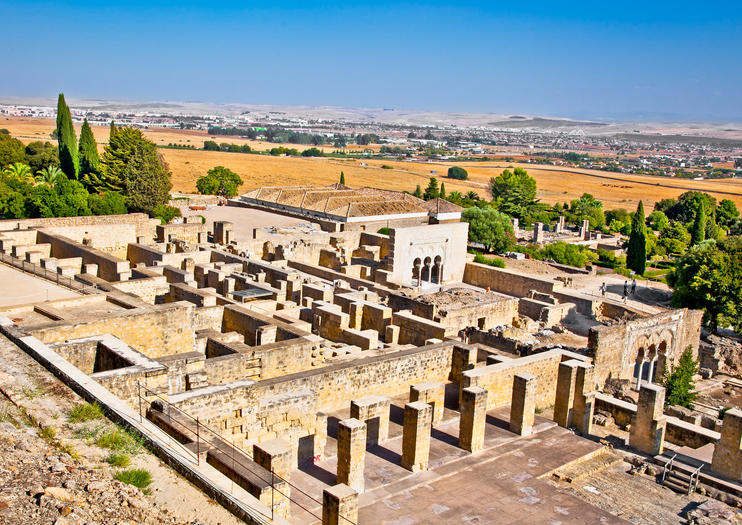
 1
Like
Published at 8:45 AM Comments (0)
1
Like
Published at 8:45 AM Comments (0)
The "Fiestas del Apóstol Santiago": Faith, Tradition, and Happiness
Saturday, July 13, 2024
In the heart of Spain, amidst the rolling landscapes and historic streets, pulsates the vibrant tradition of the Fiestas del Apóstol Santiago, an annual celebration honouring Saint James the Great, the patron saint of Spain. This festivity, deeply rooted in both religious and cultural soils, unfolds a panorama of history, faith, and communal joy. Each year, on the 25th of July, the nation, especially the city of Santiago de Compostela in Galicia, becomes a focal point of devotion and festivity, attracting not just the locals but pilgrims and tourists from across the globe.
The origins of the Fiestas del Apóstol Santiago are intertwined with the legend and history of Saint James the Great, one of Jesus Christ's twelve apostles. After Christ's death, Saint James travelled widely, supposedly reaching the Iberian Peninsula to spread Christianity. Following his martyrdom by beheading in Jerusalem, legend states that his disciples transported his body back to Spain, where he was later buried in the site now known as Santiago de Compostela.
The discovery of his tomb in the early 9th century by a hermit, guided by a field of stars, gave rise to the name "Compostela," from Latin "campus stellae" meaning "field of stars." This discovery not only marked the inception of Santiago de Compostela as a pilgrimage site but also laid the foundations for the celebrations that would become the Fiestas del Apóstol Santiago.
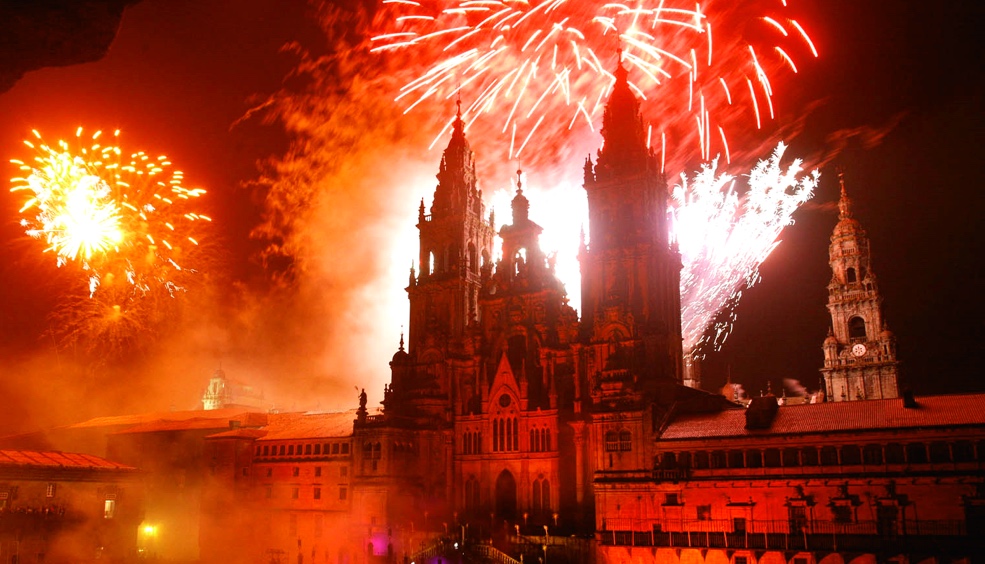
The Fiestas del Apóstol Santiago are a melting pot of solemn religious ceremonies, vibrant parades, exhilarating music, and dance performances, embodying the spirit of Galician culture. The festivities span the better part of July but reach their climax on Saint James's Day, the 25th, with a series of events that pay homage to the apostle and celebrate Galician heritage.
One of the most significant traditions tied to the festivity is the Camino de Santiago, a network of ancient pilgrim routes stretching across Europe and converging at the tomb of Saint James in Santiago de Compostela. July witnesses thousands of pilgrims, known as "peregrinos," completing their journey, with many timing their arrival to coincide with the fiestas. This pilgrimage, emblematic of personal, spiritual, or cultural quests, underscores the profound religious essence of the celebrations.
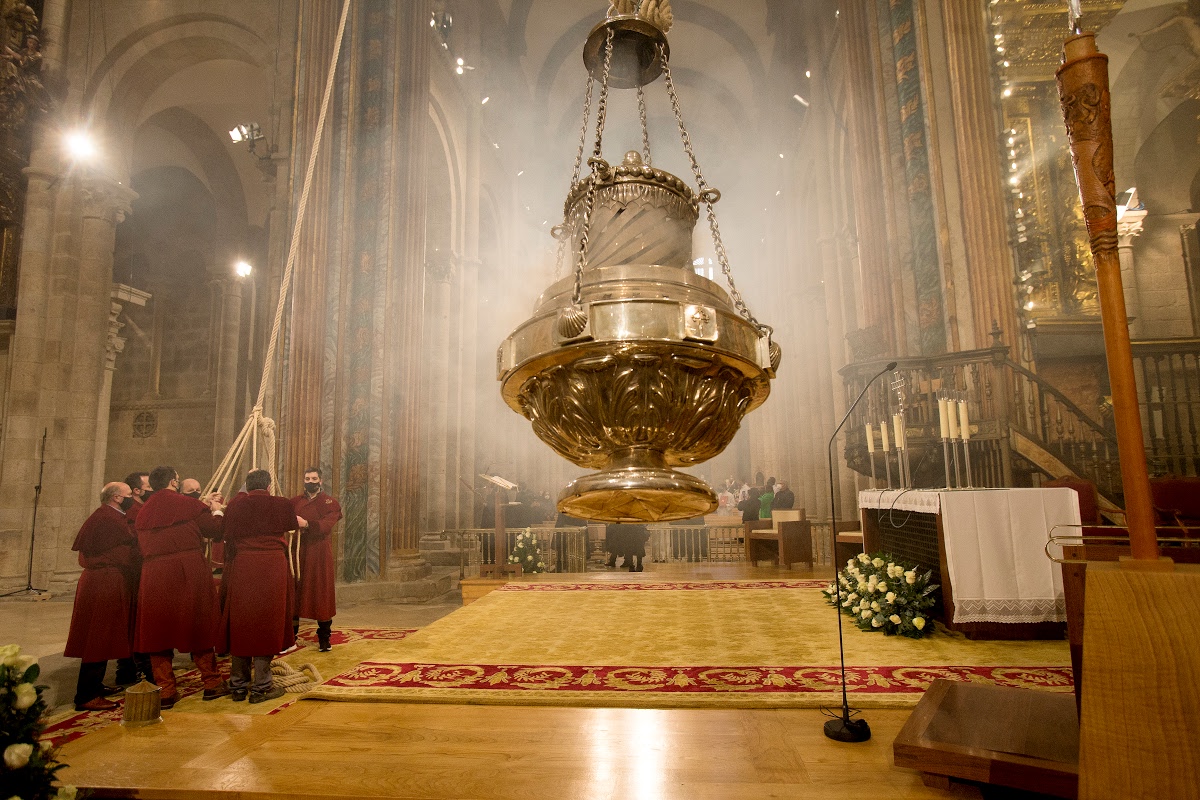
The spiritual heart of the festival is the liturgical celebrations held at the Cathedral of Santiago de Compostela, an architectural marvel and the final destination for the pilgrims. The most awe-inspiring service takes place on the 25th, featuring the "botafumeiro," a giant incense burner that is swung across the transept of the cathedral by eight robed men, disseminating clouds of fragrant smoke over the congregation, a spectacle that blends devotion with breathtaking visual drama.
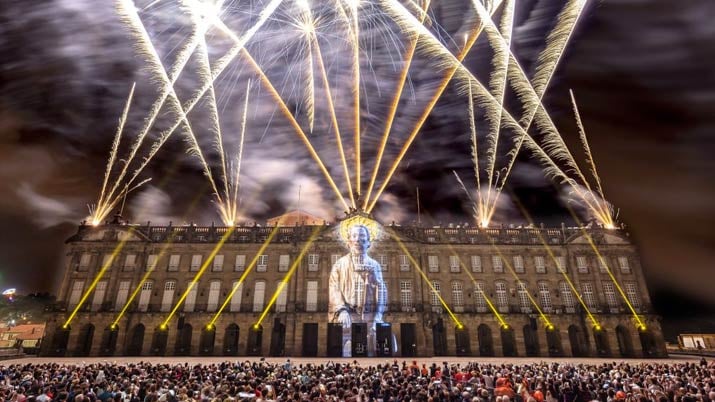
Beyond the religious observances, the streets of Santiago de Compostela and other Spanish towns brim with cultural festivities. Traditional Galician music and dance performances are ubiquitous, with the sound of bagpipes, known as "gaitas," filling the air, evoking the Celt-influenced heritage of the region. Artisans and vendors set up stalls, offering everything from local handicrafts to exquisite Galician gastronomy, enabling both locals and visitors to indulge in the flavours and crafts of the region.
One of the cultural highlights is the "fuegos del Apóstol," a spectacular fireworks display that illuminates the sky on the eve of Saint James's Day. Cast against the backdrop of the cathedral, this pyrotechnic marvel is a vivid embodiment of the celebration's jubilance.
In the present day, the Fiestas del Apóstol Santiago stand as a testament to the resilience and unity of the Spanish people. Despite the challenges posed by modernity and the complexities of contemporary life, these festivities have not only endured but flourished, drawing people from diverse backgrounds into a shared experience of faith and festivity.
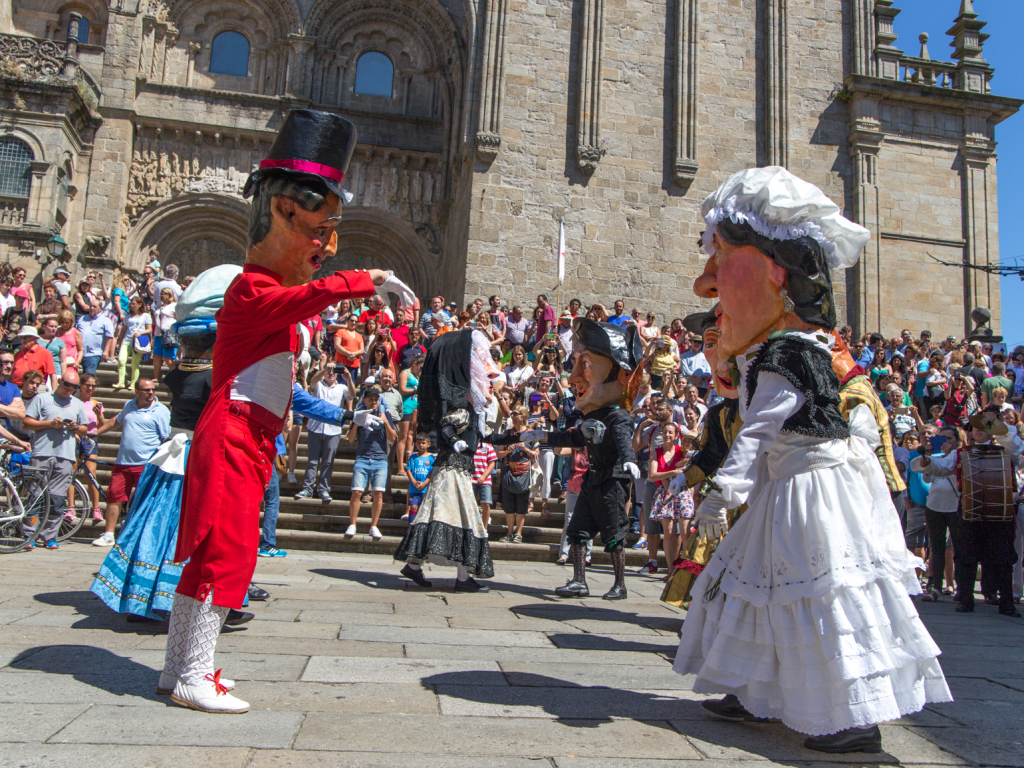
Beyond its religious connotations, the festival is a vibrant canvas showcasing Spain's rich cultural mosaic, a platform for dialogue between the past and present. It is a time when the nation, irrespective of individual beliefs or origins, comes together to celebrate a shared heritage and to welcome those who journey to partake in this unique experience.
As the Fiestas del Apóstol Santiago continue to evolve, they encapsulate the dynamic spirit of Spain, a country deeply proud of its traditions yet open and welcoming to the world. For those who attend, whether as a pilgrim completing their spiritual journey or a visitor drawn by the allure of the festivities, the Fiestas offer an unparalleled experience — a moment to partake in the joy and community spirit that defines the Spanish way of life.
The Fiestas del Apóstol Santiago beautifully intertwines the threads of faith, tradition, and cultural celebration into a vibrant tapestry of Spanish heritage. They remind us of the power of community and the enduring appeal of shared traditions in bringing people together. Whether you are walking the ancient paths of the Camino, participating in the liturgical rites, or simply soaking in the carnival atmosphere, these festivities offer a glimpse into the soul of Spain, eternally animated by the spirit of Saint James.
 0
Like
Published at 1:07 PM Comments (0)
0
Like
Published at 1:07 PM Comments (0)
Horse races - SanLucar de Barrameda Beach - Just around the corner...
Friday, July 5, 2024
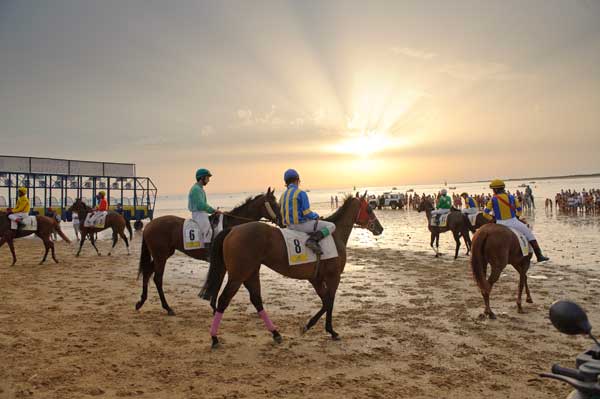
Sanlucar de Barrameda is famous for its horse racing which takes place along a 1,800m stretch of beach at the mouth of the Río Guadalquivir during the month of August, this year from the 14th to 30th of August This is a thrilling spectacle where real racehorses thunder across the sand watched by a large noisy crowd of spectators. There is nothing amateur about this event and you can expect to see spectator stands, bookies, paddocks and of course the winner's enclosure. Now an international event with horses from other European countries taking part and many famous names amongst the spectators. With more than 165 editions on its back, it is the oldest equestrian activity in Spain and one of the oldest ones in Europe. It has also been declared of International Tourist Interest since 1997.
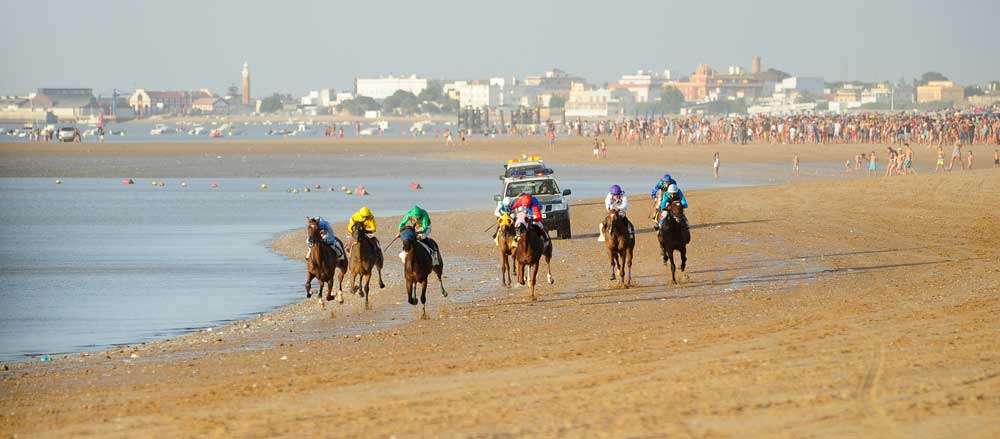
Run by the "Horseracing Society of Sanlúcar de Barrameda", in its by-laws it expressly states that one of the activities that the society will carry out will be the holding of horse races, with the first ones being held on the beaches of Sanlúcar de Barrameda, in the afternoon of August 31st, in 1845. This marked the beginning of one of the most exhilarating horse races in the country.
It has traditionally been admitted that the origin of the “Horse Races on the Sanlúcar de Barrameda beach" started with the informal competitions, that was held by the owners of horse stock that was used for transporting the fish from the former port of Bajo de Guía to the local markets and nearby towns. It was effectively a past-time while they waited for the fishing trawlers to come back into port. But, how exactly the races started is ambiguous. Another story is that people raced donkeys along the banks for fun and eventually upgraded to horses.
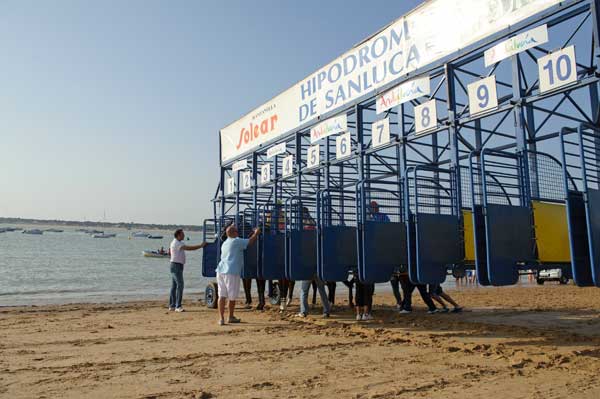
As of 1981, the “Horse Races on the Sanlúcar Beaches" have gathered momentum with the re-founding of the former Horseracing Society of Sanlúcar de Barrameda and the approval of its by-laws on March 3rd of that year. Since then, the horse races, under the exclusive direction of the society, have reached a scale that was unheard of until then, exceeding the splendour achieved in the first decades of the 20th century. The competition days were expanded to two periods of three days each; the Sanlúcar races were given official status and they were integrated into the national equestrian circuit – along with Madrid, San Sebastián and Seville, Dos Hermanas and Mijas- and received decisive support from the “Society for the Promotion of Horse Breeding of Spain”, which made them famous worldwide.
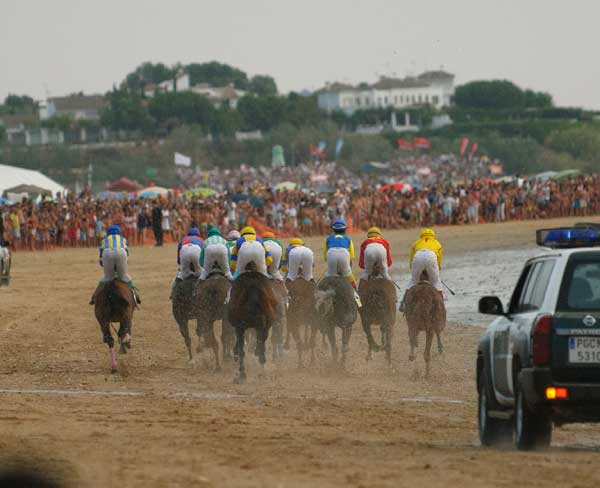
After many years during which the Horseracing Society of Sanlúcar de Barrameda was solely responsible for holding the annual equestrian competitions on the beach of Sanlúcar, as a social event most representative of its annual activities, the organizing of horse races fell under the authority of the City Council, which included them in its summer programmes.
Today, the Horse Races on the Sanlúcar beaches, now privately managed, are thriving and enjoying strong support and stand out as one of the main events of the summer in Andalucía. This unique show on the world stage, declared as an International Tourist Interest, captures the attention of thousands of Sanlúcar residents and visitors, who every afternoon of the races approach the Sanlúcar beaches to enjoy the purebreds competing on a natural racetrack, which in the afternoons of the month of August give us a low tide. So if you happen to be near Sanlúcar de Barrameda in August, don't miss an afternoon at the races!
This year the races are on 14, 16 y 17 of August and then on the 28, 29 y 30 of August
http://www.carrerassanlucar.es/es/
 0
Like
Published at 11:10 PM Comments (1)
0
Like
Published at 11:10 PM Comments (1)
Spam post or Abuse? Please let us know
|
|